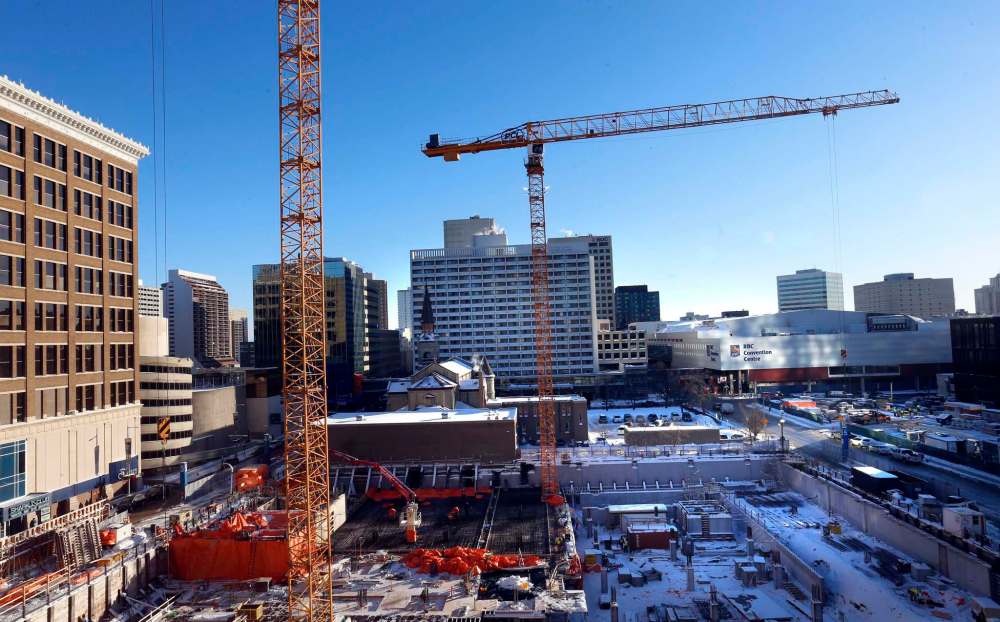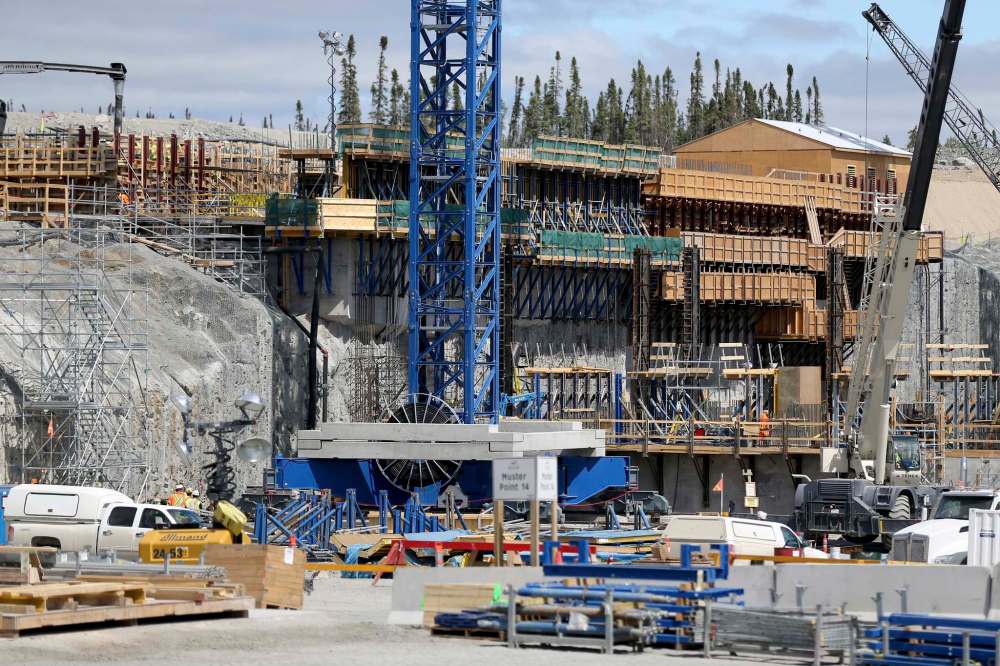Business council warning: Province’s economy could sputter without major capital projects
Advertisement
Read this article for free:
or
Already have an account? Log in here »
To continue reading, please subscribe:
Monthly Digital Subscription
$0 for the first 4 weeks*
- Enjoy unlimited reading on winnipegfreepress.com
- Read the E-Edition, our digital replica newspaper
- Access News Break, our award-winning app
- Play interactive puzzles
*No charge for 4 weeks then price increases to the regular rate of $19.00 plus GST every four weeks. Offer available to new and qualified returning subscribers only. Cancel any time.
Monthly Digital Subscription
$4.75/week*
- Enjoy unlimited reading on winnipegfreepress.com
- Read the E-Edition, our digital replica newspaper
- Access News Break, our award-winning app
- Play interactive puzzles
*Billed as $19 plus GST every four weeks. Cancel any time.
To continue reading, please subscribe:
Add Free Press access to your Brandon Sun subscription for only an additional
$1 for the first 4 weeks*
*Your next subscription payment will increase by $1.00 and you will be charged $16.99 plus GST for four weeks. After four weeks, your payment will increase to $23.99 plus GST every four weeks.
Read unlimited articles for free today:
or
Already have an account? Log in here »
Hey there, time traveller!
This article was published 15/02/2017 (3230 days ago), so information in it may no longer be current.
Manitoba could suffer an economic slowdown unless the Pallister government starts spending money on major capital projects, the Business Council of Manitoba warned Tuesday.
“When you hold up (building) hospitals, schools, you run the risk of having a dip. When you start curtailing health, schools, universities, you do have a ripple effect,” said Don Leitch, the business council’s president and CEO.
“If it continues too long, you’re going to get a slowdown. Right now, the emerging weak spot is the public sector,” he said.
Leitch said hydro megaprojects in northern Manitoba and private sector developments such as the True North downtown project have been giving construction and the trades a lot of work.
But the industry has been telling the Pallister government that Manitoba needs predictable, stable public capital spending so that it’s not hurt when the private sector projects slow down, Leitch said.
“Lots of organizations have been encouraging the government to commit,” he said.
It’s not just a matter of the province saving money — money for capital projects helps pay salaries that are spent locally; the money buys goods and materials, and the projects and employees pay taxes back to the province, he said. “It’s the total real experience in the economy that’s the driver. Multipliers can be negative, when you take (money) out.”

$1 billion in spending on hold
The Pallister government hase placed every promised NDP initiative under review, vowing to reduce spending and get the provincial deficit under control.
Last week, the province put on hold what it said amounted to $1 billion worth of health projects, including $300 million for the long-awaited new CancerCare Manitoba building. NDP-promised new schools for Waterford Green in northwest Winnipeg and south Brandon are on hold, while every university and community college has projects on the books for tens or even hundreds of millions of dollars’ worth of capital projects, Leitch said.
Some projects, such as the Winnipeg Art Gallery and Manitoba Museum, depend on matching grants along with their own fundraising, he said, adding it is ironic the former NDP government would provide capital funding and wait for Ottawa; now Ottawa has grants but is waiting for Manitoba to match the money.
“If you starve your system of capital for even a few years, you see a deterioration,” Leitch said. “Other provinces with large projects under way are always a magnet — if you let capital slip, you’ll lose talent here.”
Some projects ‘warranted and needed’
Ron Hambley, president of the Winnipeg Construction Association, said because of the pause on several public sector projects, the first-half of 2017 is shaping up to be “a challenge” for his industry.
“Certainly there was some infrastructure, specifically roadwork, announced a few months back – it was quite a bit less than what we were told to expect (in both Winnipeg and in the rest of Manitoba). So, we’re watching that one carefully,” he said.
Hambley said it’s no surprise that the new government would take a hard look at past commitments and that some projects wouldn’t make the grade.
But some are obviously “warranted and needed,” he said, citing two Winnipeg personal care home projects that are ready for tender. The Free Press reported last week that the two proposed 120-bed centres could be in doubt because they exceed newly instituted provincial cost guidelines.

Hambley said there’s been considerable private-sector investment in the city, and the federal government has been keen on rapid transit and other projects, but provincial construction spending is also crucial.
“The (project review) process has gone on for quite some time now so we’re eagerly anticipating the projects that they do announce,” he said of the Pallister government.
Chris Lorenc, president of the Manitoba Heavy Construction Association, said it’s important that the Progressive Conservatives keep their promise to spend $1 billion annually on strategic infrastructure. He defined strategic infrastructure as streets, highways, bridges, sewer and water projects and drainage.
“I think if we start to see wading pools and parks and things like that (included) that should be cause for alarm,” he said.
Delaying investments and re-investments in core infrastructure may be easy to do, but such an approach creates substantial costs — and economic harm — down the road, Lorenc said.
‘Pennywise but pound foolish’
“You can be pennywise but extremely pound foolish, if you delay that (in) which you should be investing.”
If a slowdown in public-sponsored construction caused skilled trades people to seek greener pastures, it could be difficult to lure them back, said Sudhir Sandhu, CEO of the Manitoba Building Trades and Allied Hydro Council, which represents more than 7,000 workers.
“It’s so short-sighted,” Sandhu said. “You can actually exacerbate the situation.”
Sandhu said the construction trades are very mobile, and if there aren’t jobs here, there’ll be jobs elsewhere. “We’re at the tail end of the previous projects — we’re at risk of disrupting the continuity of work. People will leave; they’ve left before, they will leave again. You’ll pay a premium to get them back.”
nick.martin@freepress.mb.ca
larry.kusch@freepress.mb.ca

Our newsroom depends on a growing audience of readers to power our journalism. If you are not a paid reader, please consider becoming a subscriber.
Our newsroom depends on its audience of readers to power our journalism. Thank you for your support.




